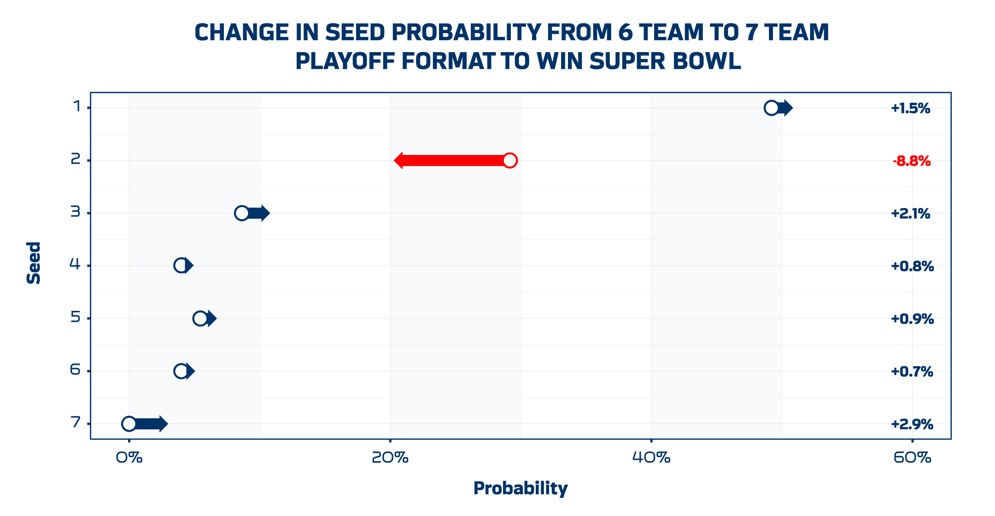The Extra Point Probability models for the new 14-team playoff system
April 6, 2020

Last week, the NFL owners voted to expand the postseason from six to seven teams per conference. In the new format, the No. 1 seed is now the only team with a first-round bye. The No. 2 seed will face the No. 7 seed on Wild Card weekend. The third through sixth seed opening matchups remain the same as they were under the 12-team format that went into effect in 1990.
The graph below shows how each seed’s estimated probability of winning the Super Bowl changes under the new playoff format. The dots represent the probability of winning the Super Bowl under the old format, the arrow extends to the new probability under this format. The text on the right shows the change in probability.

Statistical models inspired by this paper were used to determine a distribution of each team’s strength, the value of home-field advantage and the value of having a bye. For each game, these factors were used to determine each team’s probability of winning any given matchup. Under this model, we simulated the playoffs 100,000 times for each format with a variety of possible team strengths for each seed to account for how each postseason can differ. The number of Super Bowl wins by seed is divided by the number of simulations to calculate the probabilities.
Only the No. 2 seed sees a decrease in the probability of winning the Super Bowl — primarily because they lose a first-round bye and now play an additional game, introducing another chance to be eliminated. The probability for the No. 1 seed increases because it now has a lower chance of playing the No. 2 seed in the Conference Championship, and a greater chance of playing a lower-seeded team. The probabilities of the remaining seeds all increase because they are now more likely to avoid higher-seeded teams and to host a playoff game in the Divisional or Conference Rounds. Since the No. 7 seed didn’t exist before, its probability increases from 0% to 2.9%.
Interestingly, the No. 5 seed has a slightly higher probability than the No. 4 seed in both formats. This is likely because the fifth seed often has a better record (and underlying team strength) as the best of the 12 non-division winners, while the No. 4 seed has the worst record of the four division winners.
This new format makes earning the top seed more important and gives two additional teams a chance to compete for the Lombardi Trophy, which should lead to even more exciting regular season and playoff football.